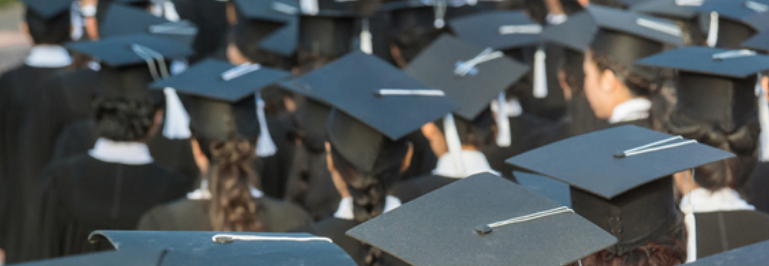
- Details
- By Darren Thompson
DENVER — Overall Native student enrollment dropped in the fall of 2020 according to data collected by the American Indian Higher Education Consortium (AIHEC) and the National Student Clearinghouse. Overall student enrollment at tribal colleges and universities (TCU) enrollment is down by 1 percent with an 11 percent drop in freshman enrollment according to AIHEC; the National Student Clearinghouse data show a 23 percent decrease in freshman enrollment among Native students at all colleges and universities throughout the country.
“Our students, their families, and their community cannot afford to take a step backwards in education attainment,” Cheryl Crazy Bull said to Native News Online. “TCUs offer Native students an opportune for an affordable, culturally focused higher education alongside restorative traditional practices to help them and their families through the pandemic.”
Although data show declining numbers among TCUs and Native student enrollment, the decrease in student enrollment is much higher at community colleges with a 9.5 percent drop nationally according to Forbes Magazine. The decrease in enrollment at community colleges is attributed to the impact of the COVID-19 pandemic with lower income and underrepresented students from marginalized communities.
Undergraduate enrollment at public colleges, the only type of institution that collects racial and ethnic data, declined for all student groupings. However, Native American student enrollment decreased the most with a loss of 12.5 percent according to the National Student Clearinghouse Research Center.
The National Student Clearinghouse Research Center is the research arm of the National Student Clearinghouse. The Research Center collects data from nearly 3,600 postsecondary institutions, which represent 97 percent of the nation’s postsecondary enrollments in degree-granting institutions, as of 2018.
“Education institutions, high schools and policymakers will need to work together to help bring back the learners who are struggling during the pandemic and recession,” Doug Shapiro, executive director, National Student Clearinghouse Research Center said to Forbes Magazine.
Native American students interested in attending college who are seeking a scholarship from the American Indian College Fund have an additional incentive to apply this year—the College Fund is offering $20 gift cards for every student that completes an application by April 30 Crazy Bull said. “The incentive is being offered to increase Native student enrollment in at tribal colleges and universities and to encourage students to continue their education goals uninterrupted, despite the pandemic,” she said.
Current Native tribal college students not receiving a College Fund scholarship, current American Indian College Fund scholarship recipients who are re-applying for scholarship funds and are attending tribal colleges, and Native high school students seeking to enroll at a tribal college are all eligible to apply. Eligible applicants must complete their applications online here to qualify for the $20 gift card incentive.
More Stories Like This
Hanging a Red Dress for Christmas: MMIP, Native Higher Education, and Hope for a Better New YearNative Students Can Win $5,000 Scholarship, International Distribution in Pendleton Design Contest
American Indian College Fund Raises Alarm Over Plan to Shift Native Programs Away From the Dept. of Education
MacKenzie Scott Foundation Gives $5 Million Contribution to Little Priest Tribal College
Tribal Leaders Push Back on Dismantling of U.S. Department of Education
Help us defend tribal sovereignty.
At Native News Online, our mission is rooted in telling the stories that strengthen sovereignty and uplift Indigenous voices — not just at year’s end, but every single day.
Because of your generosity last year, we were able to keep our reporters on the ground in tribal communities, at national gatherings and in the halls of Congress — covering the issues that matter most to Indian Country: sovereignty, culture, education, health and economic opportunity.
That support sustained us through a tough year in 2025. Now, as we look to the year ahead, we need your help right now to ensure warrior journalism remains strong — reporting that defends tribal sovereignty, amplifies Native truth, and holds power accountable.
 The stakes couldn't be higher. Your support keeps Native voices heard, Native stories told and Native sovereignty defended.
The stakes couldn't be higher. Your support keeps Native voices heard, Native stories told and Native sovereignty defended.
Stand with Warrior Journalism today.
Levi Rickert (Potawatomi), Editor & Publisher
